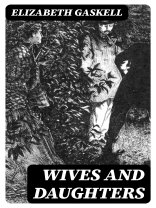In ‘Wives and Daughters, ‘ Elizabeth Gaskell crafts a rich tapestry of Victorian society, intricately weaving together the lives of her characters against the backdrop of England’s changing social structure. The novel exemplifies Gaskell’s signature blend of realism and romanticism, exploring themes of love, marriage, and female autonomy. Set in the fictional town of Hollingford, the narrative follows the coming-of-age of Molly Gibson, as she navigates personal and social challenges shaped by class divisions and gender expectations. Gaskell’s keen observational skills and nuanced character development reflect her deep engagement with the social issues of her time, making this work a critical study of the woman’s role in the tumultuous Victorian era. Elizabeth Gaskell was profoundly influenced by her own experiences as a wife and mother, as well as her observations of the shifting dynamics of 19th-century England. Her personal connections with various social classes, stemming from her upbringing and her married life, provide her with a singular perspective on the complexities of familial and romantic relationships. Gaskell’s commitment to social reform and empathy for the marginalized is evident throughout her literary corpus, particularly in ‘Wives and Daughters.’ This novel is highly recommended for readers seeking a deep, immersive experience in Victorian literature. Gaskell’s exploration of gender roles and societal expectations will resonate with contemporary audiences, making it a timeless examination of the human condition. ‘Wives and Daughters’ is not merely a narrative of personal growth but also a critical reflection on the intricacies of love and marriage, ensuring its place as a significant work in the literary canon.
About the author
Elizabeth Gaskell, born Elizabeth Cleghorn Stevenson on September 29, 1810, in London, is a distinguished figure in Victorian literature known for her keen observation of society and insightful portrayal of domestic life. Gaskell’s formative years were spent in Cheshire after the untimely death of her mother, which would later influence her literary works. Marrying William Gaskell, a Unitarian minister, in 1832, she settled in Manchester, a setting that would provide a backdrop to many of her social novels. Gaskell’s literary career blossomed with the publication of ‘Mary Barton’ (1848), which gained her recognition as a perceptive social commentator, addressing the plight of the working class in industrial England. Her narrative artistry further evolved with ‘Cranford’ (1853), a gently satiric portrayal of small-town life, and ‘North and South’ (1855), delving into social and gender divides. Her final work, ‘Wives and Daughters’ (1866), remained unfinished at her death on November 12, 1865, and posthumously underscored her adeptness at creating complex characters and exploring social and familial relations. Gaskell’s literary style is characterized by a blend of realism, warmth, and sharp societal critique, endearing her to readers and critics alike.












